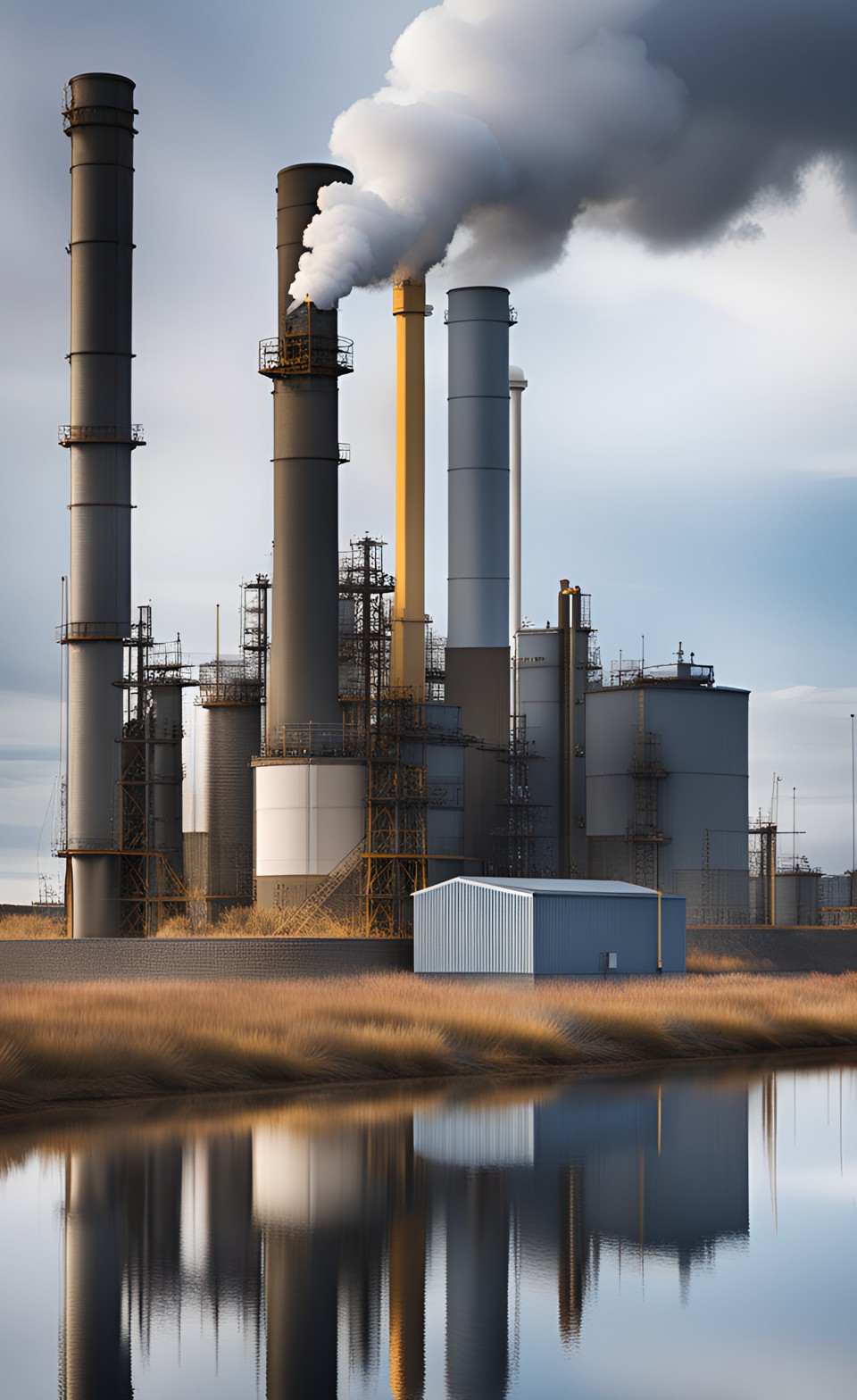- Air Homepage
- Alberta Air Quality
- Ambient Air Monitoring Equipment
- Fourth Chapter
AMD fourth chapter - Environmental Monitoring Guidelines for Alberta's Industries
Check out the fourth chapter of Alberta's Air Monitoring Directive (AMD) for guidelines and methods of fluoride analysis and implications, emissions monitoring, and passive sampler accuracy and regulatory compliance. Learn how Alberta's precision standards help us ensure environmental happiness.
Do your passive samplers fail the bias check if you don't notify the Director in advance? Learn the critical methods for fluoride analysis, emissions sampling, and data validation required by Alberta's AMD and stop risking non-compliance - Monitoring Fluoride, Stacks, and Sampler Accuracy in AMD Chapter 4
The last part of Chapter 4 is summarized on this page. Here's the beginning of the chapter.
6.0 Vegetation Monitoring
Fluoride monitoring is necessary when industrial emissions could lead to fluoride accumulation in plants or forage. Plants or animals that graze on these plants could be harmed by this accumulation. The requirement applies to industrial operations that have been approved and are obligated to monitor fluoride levels in vegetation.
 Monitor this!
Monitor this!6.1 Fluoride Analysis
Knowing how fluoride affects plants and grazing animals requires accurate measurements of fluoride in vegetation. In accordance with the fourth chapter, the responsible person must submit their proposed analysis method to the Director for approval before monitoring vegetation fluoride.
Use only the analysis method authorized in writing by the Director. Prevent fluoride dissolution by collecting vegetation samples after rain and dew drops have dried. Test all vegetation samples for fluoride without washing them.
Master Alberta's Air Monitoring Directive (AMD) to make sure you're in compliance. You can help the environment by studying fluoride analysis, emissions monitoring, and passive sampler accuracy.
In this chapter, you'll learn about vegetation and industrial source monitoring. Keep up with best practices for environmental monitoring with this article. Precision and compliance will protect our environment.
7.0 Industrial Source Monitoring
The rules and guidelines for monitoring industrial emissions are in this section of the fourth chapter. It applies to industrial operations that have to monitor emissions as required by their approval conditions and Alberta's laws.
 Compliance monitoring for industrial emissions.
Compliance monitoring for industrial emissions.7.1 Sampling Procedures
Here's how to sample emissions from industrial stacks. Sampling has to follow specific codes and methods, like the Alberta Stack Sampling Code. Deviations from these methods need the Director's approval. It's also important to make sure measurements represent emissions accurately. To ensure safety, plan sampling based on weather conditions in cold weather.
7.2 Notification of Planned Stack Surveys
When planning stack surveys or relative accuracy test audits (RATA), you need to let the Director know in advance. In Chapter 9 of the AMD, which is the Reporting Chapter, you can find the process and format for this notification.
7.3 Industrial Source Monitoring Reports
Chapter 9 of the AMD is the Reporting Chapter and it explains how to create reports for industrial source monitoring. Guidelines and requirements for preparing these reports are in Chapter 9. This section concludes the fourth chapter.
Appendix - Determination of Passive Sampler Precision and Accuracy
Passive samplers are used to measure air pollutants over time. In addition to being cost-effective, passive samplers cover a lot of ground. As a supplement to continuous monitoring, they're great. Air pollution patterns will be understood, regional data will be provided, and standards will be compared.
Field sampling guidance includes details on passive sampler validation, precision, and accuracy. The validation process involves checking bias, precision, correlation, and accuracy. In field sampling, you compare the data from passive samplers to a reference method monitor. Passive samplers provide accurate pollution measurements thanks to these comparisons.
Calculations needed for the fourth chapter
Part A: Calculation of bias and precision
Bias is how far your sample's average (mean) is from the known value. It's expressed as a percentage and calculated as follows:
(Sample Mean - Known Value) x 100 = Bias (%) CHECK!!!
 Help us understand air pollution
Help us understand air pollutionPassive samplers need to be validated with seven samples exposed to the same conditions. Calculate the 95% confidence limit of the bias to assess it. It should be within 25%.
See the equations in proper form in the fourth chapter. Some statistics are involved in the calculations:
Sample Mean (x̄): Average of your sample data.
Lower Confidence Limit (L): Part of the confidence limit formula.
Lower Confidence Limit (U): This is the other part.
Data variability is measured by sample standard deviation (s).
Standard Deviation of the Sample Mean (s̄): How much the sample mean varies.
A statistical value (2.447 for 95% confidence level and seven samples) for the experiment.
Another term you should know is precision. The Coefficient of Variation (CV) is calculated this way:
(Standard Deviation / Sample Mean) x 100 = CV (%)
Validation needs a CV less than 10%, indicating high precision.
Create a scatter plot when analyzing the data. Data interpretation is easier when you see the relationship between passive sampler concentrations and their replicates.
Part B: Calculation and test of correlation coefficient
Passive samplers need to be correlated with reference method monitors to be accurate. Here's what you need to do:
- For the same period, you'll have observations (data) from the passive sampler (x) and the reference method monitor (y).
- Use this formulae in Part B to calculate the correlation coefficient (r).
A scatter plot shows the relationship between passive sampler and reference method monitor values, which is handy for interpreting your data.
These formulae are to assist users of the fourth chapter in determining whether data acquisition is being properly handled.
Elevate Your Air Quality Monitoring With Calvin Consulting Group Ltd.
The Calvin Consulting Group puts together Quality Assurance Plans, conducts audits, and models the dispersion of emissions to predict their impact on air quality.
What makes Calvin Consulting Group Ltd. different? We make sure regulatory compliance and environmental needs are met. And do so in a friendly and efficient manner.
Ready to improve your air quality monitoring? And take your environmental monitoring to the next level with Calvin Consulting Group Ltd.? Give Barry a shout using this contact info.

We offer:
Dispersion modeling: Tailored solutions to understand air pollution patterns and regional data.
Plans and audits to ensure precise monitoring, aligned with AMD guidelines. Our goal is to make sure you're compliant and your info is accurate.
Here are the last few sections of AMD Chapter 4
To ensure ecological compliance in industrial settings, the Alberta Air Monitoring Directive (AMD) details fluoride analysis, industrial emission monitoring, sampling procedures, and passive sampler accuracy.
Do you have concerns about air pollution in your area??
Perhaps modelling air pollution will provide the answers to your question.
That is what I do on a full-time basis. Find out if it is necessary for your project.
Have your Say...
on the StuffintheAir facebook page
Other topics listed in these guides:
The Stuff-in-the-Air Site Map
And,
Thank you to my research and writing assistants, ChatGPT and WordTune, as well as Wombo and others for the images.
OpenAI's large-scale language generation model (and others provided by Google and Meta), helped generate this text. As soon as draft language is generated, the author reviews, edits, and revises it to their own liking and is responsible for the content.



New! Comments
Do you like what you see here? Please let us know in the box below.